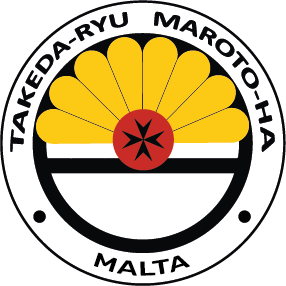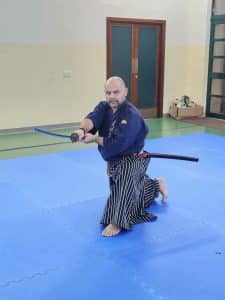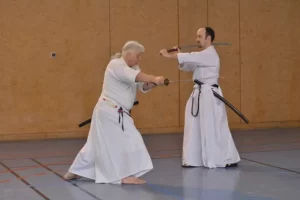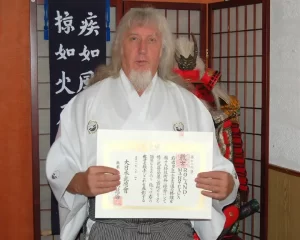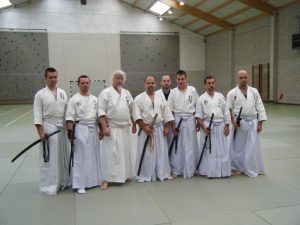IAIDO & KENJUTSU …TRADITIONAL TAKEDA-RYU MAROTO-HA |
Iaido practice
Takeda ryu Iaido is a traditional Japanese school of sword arts with a long tradition and deep roots.
It is known as the art of fast drawing the sword and achieving victory over an attacker with a single slash.
The practice of Iaido is suitable for men, women and all young people as it develops coordination and attention to detail, balance, harmony, deep breathing and inner peace. It does not have to be physically demanding, it depends on what level you choose, so that it harmonizes with your own rhythm.
Iaido is based on the martial art of samurai of ancient times – Iai-jutsu. But in times of peace, the art has transformed. Not that it has changed, but it has been enriched with philosophical elements and has become more of an inner journey than the original art that protected the honor of the master and the life of the samurai on a daily basis.
Nowadays, Iaido combines the traditional art of fighting with the knowledge and improvement of oneself. It strengthens concentration, spatial imagination, insight and quick decision-making, all of which are useful in our everyday lives.
In the beginning, it is practiced with a wooden sword – bokken. Later, along with technical maturity and control, the student moves on to using an unsharpened metal sword for Iaido – Iaito exercises.
In the first lessons you make do with sports clothes, which you then exchange for a gi (kimono) and hakama. Bokken can be rented from us.
In the initial lessons, the student learns the basic movements and principles, deep breathing and rhythm, so as to subsequently combine these elements into the mosaic of the next level – independent kata practice. The progressive steps bring a natural joy in one’s own progress and practice.
Through gradual practice, the student gains skill, imagery and perception of distance, and can move on to advanced technique practice – practicing kata with a partner, where they gain a greater understanding of proper technique execution, distance and range.
To gain a comparison of skills and to test the level of his technique, the student practices the so-called Batto Djiai, which resembles a real fight between two opponents. All practice is done under strict safety precautions and at a safe distance so as to eliminate the possibility of any injury.
If you are tempted by this journey, feel free to come and try your hand at the art of the sword. Perhaps Iaido will speak to you as powerfully as it did to me all those years ago.
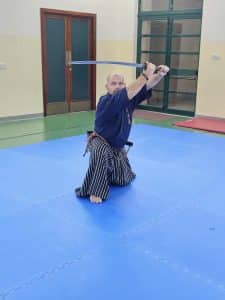
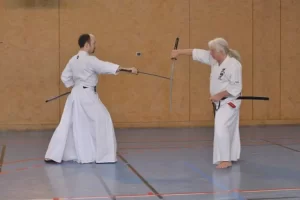
Typical elements of Takeda Ryu Iaido:
Kihon Waza – perfect mastery of the basic technique (drawing, precise slash, control of the situation, sharpening the blade and retracting the sword ).
Kata – precise routines – techniques that are practised without a partner.
Kirikomi Tai Sabaki no Kata – practical applications of techniques that are practised in pairs.
A unique element in Iaido schools.
Henka Waza – free applications and combinations of learned techniques performed alone or in pairs.
Based on the student’s nature. With elements of Kenjutsu.
Batto Djiai – free application of techniques with the naturalness and speed of a real fight. Without physical contact.
With competitive elements.
Tameshigiri – testing the technique of slashing, performed with a sharp sword on natural materials.
It is performed after passing the Sandan test in Iaido.
Kenjutsu – Iaido of the Takeda ryu school incorporates the basic elements of Kenjutsu in the form of blocks and counterattacks.
It is practised in kata formations or with a wooden sword. A faster spontaneous variant is then performed with soft weapons.
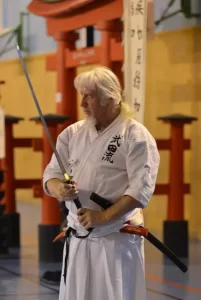
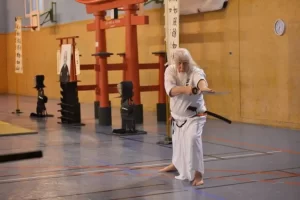
What is iaido and kenjutsu?
Iaido and kenjutsu are both traditional Japanese martial arts that focus on swordsmanship. Here are brief explanations of each:
Iaido: Iaido is a Japanese martial art that emphasizes the drawing, cutting, and sheathing of the Japanese sword (katana) in a fluid, controlled, and efficient manner. Practitioners of Iaido learn how to use the sword in both offensive and defensive situations and train to develop their concentration, awareness, and precision. Iaido is often practised solo, with practitioners performing a series of predetermined movements (katas) in response to imaginary opponents.
Kenjutsu: Kenjutsu is a broader term that refers to the traditional Japanese martial art of swordsmanship. While Iaido focuses on the drawing and sheathing of the sword, Kenjutsu emphasizes the use of the sword in actual combat situations, including offensive and defensive techniques, footwork, and strategies for engaging multiple opponents. Kenjutsu is often practised in pairs, with practitioners using wooden or bamboo swords (bokken) to simulate combat scenarios.
Both Iaido and Kenjutsu are considered to be highly disciplined and focused martial arts and require a great deal of practice, concentration, and dedication to master. They are also deeply rooted in Japanese culture and history and are considered to be important aspects of Japan’s martial arts heritage.
What are the benefits of practising iaido?
Practising iaido can bring a range of benefits to both the body and mind. Here are some of the key benefits of practising iaido:
- Increased focus and concentration: Iaido requires a high degree of focus and concentration, as practitioners must perform complex and precise movements with the sword. This can help to improve mental discipline and focus in other areas of life as well.
- Improved physical fitness: Iaido involves many physical movements that can help to improve overall fitness, including strength, flexibility, coordination, and balance.
- Stress relief: The meditative and controlled movements of iaido can help to reduce stress and promote relaxation, providing a mental break from daily stresses and worries.
- Self-awareness: Practicing iaido requires an acute awareness of one’s body and surroundings, which can improve overall mindfulness and self-awareness.
- Self-confidence: As practitioners progress in iaido and develop their skills, they may experience increased self-confidence and self-esteem.
- Cultural appreciation: Iaido is deeply rooted in Japanese culture and history, and practising iaido can provide a deeper appreciation and understanding of this culture.
- Community and social connections: Practicing iaido can provide opportunities to connect with others who share an interest in martial arts and Japanese culture, creating a sense of community and social support.
Overall, practising iaido can bring a wide range of physical, mental, and social benefits, and can be a rewarding and fulfilling activity for those interested in martial arts and Japanese culture.
What I need to start practising iaido?
To start practising iaido, you will need a few key things:
- A suitable training uniform: Iaido practitioners wear a special uniform called a “gi” that is designed to allow for freedom of movement. A gi typically consists of a jacket, pants, and a belt (obi).
- A training sword: A practice sword called a “iaito” or “shinken” is used in iaido training. These swords are designed to mimic the weight and balance of a real sword, but have a blunt edge and are not sharp.
- Dedication and commitment: Like any martial art, iaido requires dedication and commitment to make progress. Regular practice is essential to develop the necessary skills and techniques.
